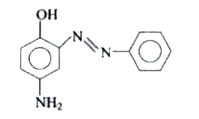Which physical quantity in a nuclear reaction is considered equivalent to the Qvalue of the reaction?
To solve the question, "Which physical quantity in a nuclear reaction is considered equivalent to the Q value of the reaction?", we need to understand what the Q value represents in the context of nuclear reactions.
1. Understanding Q Value:
The Q value of a nuclear reaction is defined as the amount of energy released (or absorbed) during the reaction. It is a measure of the energy difference between the reactants and the products.
2. Nuclear Reaction Basics:
In a typical nuclear reaction, a stable nucleus (let's call it nucleus A) is bombarded by a particle (let's call it particle a). This interaction can lead to the formation of an unstable nucleus (nucleus C), which eventually decays into one or more stable nuclei (let's say nucleus B and another particle b).
3. Energy Considerations:
The energy released (Q value) during the reaction can be calculated using the law of conservation of mass-energy. According to this law, the total energy before the reaction must equal the total energy after the reaction.
4. Calculating Q Value:
The Q value can be expressed mathematically as:
Q=(Efinal−Einitial)
where Efinal is the total energy of the products and Einitial is the total energy of the reactants.
5. Mass Defect:
Another way to express the Q value is through the concept of mass defect. The mass defect is the difference between the mass of the reactants and the mass of the products. The Q value can be related to the mass defect (Δm) by the equation:
Q=Δm⋅c2
where c is the speed of light in a vacuum.
6. Kinetic Energy Change:
Additionally, the Q value can also be related to the change in kinetic energy of the particles involved in the reaction. Thus, we can express it as:
Q=ΔKE
where ΔKE is the change in kinetic energy of the system.
Conclusion:
Therefore, the physical quantity in a nuclear reaction that is considered equivalent to the Q value of the reaction can be summarized as:
- Total energy change during the reaction
- Energy associated with the mass defect
- Change in kinetic energy of the reaction
The Q value of a nuclear reaction is defined as the amount of energy released (or absorbed) during the reaction. It is a measure of the energy difference between the reactants and the products.
In a typical nuclear reaction, a stable nucleus (let's call it nucleus A) is bombarded by a particle (let's call it particle a). This interaction can lead to the formation of an unstable nucleus (nucleus C), which eventually decays into one or more stable nuclei (let's say nucleus B and another particle b).
The energy released (Q value) during the reaction can be calculated using the law of conservation of mass-energy. According to this law, the total energy before the reaction must equal the total energy after the reaction.
The Q value can be expressed mathematically as:
Q=(Efinal−Einitial)
where Efinal is the total energy of the products and Einitial is the total energy of the reactants.
Another way to express the Q value is through the concept of mass defect. The mass defect is the difference between the mass of the reactants and the mass of the products. The Q value can be related to the mass defect (Δm) by the equation:
Q=Δm⋅c2
where c is the speed of light in a vacuum.
Additionally, the Q value can also be related to the change in kinetic energy of the particles involved in the reaction. Thus, we can express it as:
Q=ΔKE
where ΔKE is the change in kinetic energy of the system.
Therefore, the physical quantity in a nuclear reaction that is considered equivalent to the Q value of the reaction can be summarized as:
- Total energy change during the reaction
- Energy associated with the mass defect
- Change in kinetic energy of the reaction
Topper's Solved these Questions
- BOOK - XII BOARD PREVIOUS YEAR PAPER ENGLISHCHAPTER - SAMPLE PAPER 2019EXERCISE - SECTION B9videos
SAMPLE PAPER 2019
- BOOK - XII BOARD PREVIOUS YEAR PAPER ENGLISHCHAPTER - SAMPLE PAPER 2019EXERCISE - SECTION C8videos
SAMPLE PAPER 2019
- BOOK - XII BOARD PREVIOUS YEAR PAPER ENGLISHCHAPTER - EXAM REVISION SERIESEXERCISE - All Questions41videos
EXAM REVISION SERIES
- BOOK - XII BOARD PREVIOUS YEAR PAPER ENGLISHCHAPTER - XII BOARDSEXERCISE - SECTION - B7videos
XII BOARDS
Similar Questions
Knowledge Check
- Question 1 - Select One
Consider the reaction
 A
A B
B C
C Dnone of these
Dnone of these
The physical quantity that has no dimensions is
View SolutionDuring a nuclear fusion reaction,
View SolutionWhat is a nuclear fission reaction ?
View Solutionwhich of these nuclear reaction is possible?
View SolutionWhich can be used for carrying out nuclear reaction?
View SolutionQ value of a nuclear reactions is positive . The reaction is
View SolutionIn nuclear reactions, we have the conservation of
View Solution
